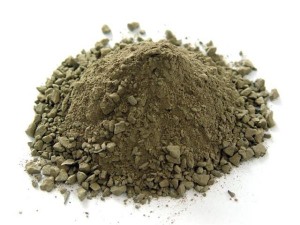Another function of the ramming material, as a binder
Ramming material has strong corrosion resistance and insulation properties, and is a high-quality filling material for converter fabrics. Today, Xiaobian will take you to understand another function of ramming material, and what are the advantages and characteristics of ramming material as a binder .
Ramming materials are often used as fillers for induction furnaces, heating furnaces, heating furnace fabrics and converter fabrics, refractory ramming materials for aluminum electrolysis cells, and manual or mechanical ramming methods are used to refractory materials with uncertain structures. Refractory ramming materials are composed of Manufactured from granular and powdery materials in which the proportion of binders and other ingredients is high and low, even if they are all composed of Call the structure.
Since the ramming material is mainly used for direct contact with the melt, grain and powder materials are required to have high volume stability, compactness and corrosion resistance, and the recovery materials used in induction furnaces must be insulating.
The tamping material should be properly selected as a binder. Some do not use binders, and some only add a small amount of flux. Acid tamping materials are commonly used binders such as sodium silicate, ethyl silicate, and silica gel. Among them, dry ramming materials are mainly Borates. Commonly used alkaline ramming materials include magnesium chloride salts and sulfates, etc., and are also used to form carbon-bonded organics and temporary binders when the carbon content is high at high temperatures. Among them, dry ramming materials contain an appropriate amount of Iron flux. Cr type is usually used as Glauber's salt.
Compared to other amorphous refractories of the same material, the rammed material is dry or semi-dry and loose, and a dense structure is obtained by dynamic compaction. The bond has strength only when heated to the sintering temperature.
After tamping, the mixture can be hardened and sintered by different heating methods depending on its hardening characteristics. If it contains inorganic chemical binders, it can be removed by mould baking up to a certain strength of self-hardening; contains thermoplastic carbon binders It should be cooled after a considerable demoulding strength, and it should be quickly heated before use to make it coke; and it often does not harden at room temperature after the mold is sintered and tamped.

Previous: The effect of using ramming material
下一条: The conditions required for the selection of intermediate frequency furnace lining materials
Related Industry Knowledge
- Features and Benefits of Coil Clay
- What are the advantages of a good furnace lining
- Misunderstandings in the use of ramming materials in intermediate frequency furnaces
- Phenomenon analysis of failure of argon blowing of ladle permeable bricks and how to improve the rate of argon blowing
- Where is the consumption reduction and energy saving of breathable bricks reflected?
- How to improve the service life of intermediate frequency furnace lining
- Reasons for damage to intermediate frequency furnace lining and how to solve them
- The performance and advantages of breathable brick
- Analysis of Structural Characteristics of Dispersive Breathable Bricks
- The intermediate frequency furnace charge knotting process needs to pay attention to details sharing
- The effect of using ramming material
- Reasons for the stable quality and performance of breathable bricks
- The use of breathable bricks
- A brief introduction to what materials are needed for ventilation bricks
- Corrosion Loss Mechanism of Rammed Lining in Submerged Arc Furnace
- What are the main reasons for the damage of ladle breathable bricks?
- What is the effect of excessive aggregate particles in the lining of the intermediate frequency furnace?
- 5 benefits of using dry ramming mixes
- Precautions for knotting of intermediate frequency furnace lining
- The intermediate frequency furnace ramming material itself is to maintain the furnace and coil


